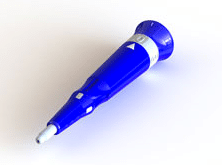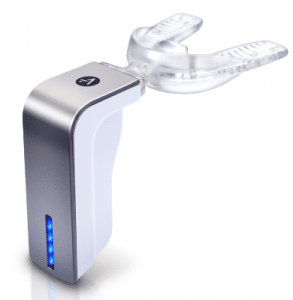For anyone who wear braces, the first question is nearly always “how long they will need to stay on?” There is an emerging school of treatment called accelerated orthodontics whose goal it is to shorten the time needed to straighten the teeth with some studies claiming that accelerated orthodontic treatment can reduce treatment times between three and eight months.
There are patients that try unsupervised methods to “accelerate” treatment—such as wearing extra rubber bands—but this can actually slow down orthodontic treatment and damage your teeth.
There are a lot of factors affecting tooth movement—like environmental, genetic, type of treatment, type of malocclusion—and they all play a part, but generally, 18-24 months is the expected time frame for a winning smile and a healthy bite.
Accelerated orthodontic treatment requires regular orthodontic devices (metal and ceramic braces, Invisalign, and lingual brace), and is used in combination with them. In some cases, it involves a minor surgical procedure. Here are two of the newer systems currently being used.
PROPEL System

Before the orthodontist applies braces, an oral surgeon also will shave the gums and bones into shapes that allow the teeth to slide more easily into their desired positions. When accompanied by active treatment, some research suggests that it can cut treatment in braces up to 50 percent.
AcceleDent

The patient wears a mouthpiece around the orthodontics, and turns it on for 20 minutes per day. It is FDA-approved, and considered a safe way to accelerate orthodontic treatment if used as directed.
What Are the Benefits of Accelerated Dentistry?
The most obvious benefit accelerated orthodontics offers over traditional methods is the treatment time. There can be many reasons for desiring to shorten time in braces, especially for adults. While there are more adults seeking orthodontic treatment now than ever before, many still worry about the appearance of brackets.
Another benefit of accelerated orthodontics is that any type of braces can be used. This includes metal braces (the most basic and widely used type), ceramic braces (white or clear brackets that are less visible), and lingual braces (placed behind the teeth so they cannot be seen).
If this is the technology that finally convinces you to get braces for you or your child, then it might be worth the investment. Research has shown that most people benefit from orthodontic care regardless of the severity of their misalignments. Getting braces and correcting other dental problems can affect your overall health as well.
What Are the Drawbacks?
Accelerated orthodontics is a new field, so there is not as much research or evidence that shows how it affects the results of your treatment over time—though no adverse effects are predicted as long as all instructions for treatment are followed correctly.
Because your teeth will shift quickly, you will require more frequent adjustments. In just a few months you may need to visit the orthodontist as many times as you would in a two- to three-year span with traditional treatment.
Most insurance companies will not pay for accelerated orthodontics, so you likely will have to front the cost.
Finally, accelerated orthodontics are not for everyone. For patients with the more severe malocclusions, traditional care will be the only option.
Other Ways to Accelerate Your Treatment
Whether traditional or accelerated orthodontics are the method you choose, there are some things everyone should do if they want to minimize their duration in braces. These tips won’t cause your treatment to speed up rapidly, but will help ensure it doesn’t go slower than predicted.
Avoid chewy and hard foods that can bend your brackets or snap your wires.
During the time between the damage to the braces and the appointment to fix it, your appliance is not pulling your teeth in the correct directions, which means your treatment time is slowing.
Use your elastics properly.
It can be tempting to leave your elastics off just a little bit longer after you remove them to eat or brush your teeth. However, the elastics can only be effective when you are wearing them. The time they spend out of your mouth is time the treatment process loses.
Cut your food into bite-sized pieces.
Cut your food into manageable portions that help you avoid taking a big bite into something crunchy. If you are going to eat crunchy foods such as apples or carrots, slice them up and cook them enough to soften them before eating. While healthy foods may not accelerate the treatment process, avoiding broken brackets will.
Keep your appointments.
The more appointments you miss, the longer your treatment will take. This doesn’t mean that you should further stress about an appointment missed because of an emergency — but habitual cancellations can lengthen time in braces.
Keep your teeth clean.
Clean and healthy teeth and gums respond better to movement than those plagued by plaque and tartar. Following your orthodontist’s instructions for your dental hygiene is an important factor in the speed of your treatment.
Don’t clench your jaw.
Teeth clenching and grinding can affect the way the teeth move during treatment. Unfortunately, oftentimes people with the habit have a hard time controlling it — especially during sleep. If you clench or grind frequently, inform your orthodontist.
Your treatment is created specifically for your needs, and currently not all cases can be sped up, regardless of the type of procedure. If you are worried about the length of your treatment, don’t give up the idea of correcting your smile.
It is good to be aware of what is available as well as all the outcomes. Talk to your orthodontist about options to speed it up. For questions about speeding up the length of your own treatment or that of your child’s, call Orthodontic Associates at one of its nine convenient locations around Baltimore. We look forward to making you smile.



